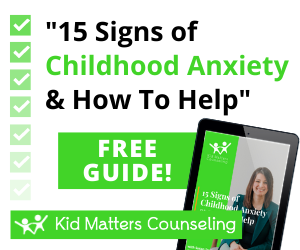A Roadmap to Positive Change
Do you ever ask yourself why you keep making the same decision over and over again even though it is not the decision you want to be making?
Well, there is a reason for this experience and it has to do with neuroplasticity. Think of our brains as an intricate roadway system. There are certain roads we typically take more than others: these are our habits.
Every time we think, experience or choose to feel a certain way we strengthen a particular roadway. The more we use that roadway the easier we find it to continue taking that roadway.
When we choose to think, experience or feel in a different way we take a different roadway. If we start to utilize this new way more, it too will be strengthened. Even more, this roadway will become stronger if it is used over the former roadway and this new way will become the new norm while the old way will weaken.
Now, has your child ever made the same decision over and over again even though it is not the decision you want them to be making? “Why is my child crying everytime we leave the house?” “How do I get my child to not explode with rage every time I ask them to do a task?”
Parents ask these questions all the time. Hopefully this new understanding of neuroplasticity can help parents understand and have hope that their child’s brain can be changed, or some say “rewired,” from negative thoughts, feelings, and experiences to positive thoughts, feelings and experiences.
How can you help your child change their thoughts, feelings, and experiences to be healthy and positive?
Here are two steps to help your child change:
STEP ONE: Help your child reframe their emotions to match their experiences.
The goal is to educate the child in the moment so that they know there are alternative ways of thinking, feeling and experiencing. Children (and adults) often mistaken one emotion for another. Let’s look at two outcomes to the same situation:
Outcome # 1: A child bumps their head at the playground and begins to cry due to feelings of sadness and then they start to fight their brother or sister due to feelings of anger. The parent steps in and disciplines their child for fighting. This child’s brain was reinforced to think that when you get hurt, you get mad and then you get disciplined.
Outcome #2: A child bumps their head at the playground and begins to cry due to feelings sadness and then they start to fight their brother or sister due to feelings of anger. The parent steps in…
Parent: “Oh no, what happened?” | Child: “I bumped my head”
Parent: “How did you feel when they bumped your head?” | Child: “Mad”
Parent: “Oh, you were mad. Ok. What were you mad at?” | Child: “My sister”
Parent: “Oh, you were mad at your sister. Did your sister make you bump your head?” | Child: “No”
Parent: “I wonder if maybe you were sad because bumping your head hurts. I’m sorry you bumped your head and it made you sad.”
In this alternative experience the parent helped reinforce the idea in the child’s brain that when you get hurt, you can feel sad, and then you can be soothed by someone you trust. See the difference in the two experiences?
It is our body’s job to notify us of a need to respond to an external experience through symptoms we feel. It is our brain’s job to interpret those symptoms and name them as specific feelings. This can be confusing for children to understand.
The chemicals that are released in the brain when we are scared are the same chemicals released when we are excited. The difference lies within our interpretation of the symptoms in our body.
It is helpful to have a list or chart of feelings ready to help your child differentiate between feelings and utilize roadways in their brains that will reinforce positive experiences.
STEP TWO: PRACTICE. PRACTICE. PRACTICE.
Since the power to change within the concept of neuroplasticity is repetition, the more you practice step one the faster the change will happen.
So go out there and help your child use positive roadways in their brains instead of negative roadways!

Keri Sawyer
Child Therapist | MA
Kid Matters Counseling has trained therapists ready to help both kids and parents walk through the tough moments in life.
End the frustration & the confusion and let's work together! SCHEDULE APPOINTMENTNew Clients Call: (855) 586-1802
Current Clients: (855) 543-7687
Ask Us Anything!
We help anxious kids and frustrated parents. We serve Hinsdale & the Western Suburbs of Chicago.
Made with ♥︎ in Hinsdale, Illinois for Chicago
Built By Brand Your Practice.
Kid Matters Counseling, P.C. DISCLAIMER: This website and blog are for informational, educational and general discussion purposes only. It is understood that no guarantee or warranty arises from the information provided, discussed or commented upon in this website and blog nor does it constitute legal or other professional advice on any subject matter. Access to this website and blog is voluntary and at the sole risk of the user. If you think that you have a medical emergency (including clinical), call your doctor or 911 immediately. A licensed medical professional should be consulted for diagnosis and treatment of any and all medical conditions. While the information contained within this website and blog is periodically updated, no guarantee is given that the information provided is correct, complete, and/or up-to-date. See our complete Privacy Policy and Terms of Service.



